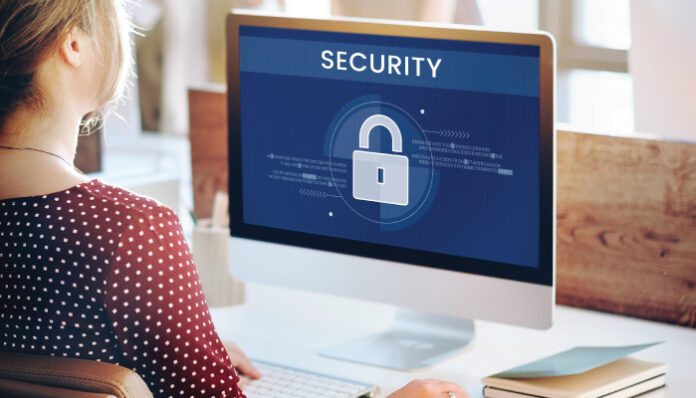When creating visibility and security controls across endpoints, IT and security practitioners must recognize that each endpoint is responsible for some or all of its own security.
Endpoint management remains a fundamental aspect of the enterprise infrastructure plan of every IT organization. The quick transition to a work-from-anywhere workforce, however, threw firms into adopting more conventional strategies for a loop. Making each endpoint resilient is paramount to implementing a successful defense strategy.
When creating visibility and security controls across endpoints, IT and security practitioners must recognize that each endpoint is responsible for some or all of its own security. This differs from the conventional approach to network security, in which established security procedures are applied to the entire network as opposed to individual devices and servers.
Therefore, keeping each endpoint resilient is essential for an effective protection plan.
The Condition of Endpoint Administration
At a bare minimum, enterprises should implement unified endpoint management and anti-virus or anti-malware software across their whole fleet of devices for endpoint management and protection. Numerous firms go beyond these basic precautions and now employ endpoint security technology that incorporates encryption, intrusion detection, and behavior-blocking components to identify and stop threats and unsafe end-user or invader activity. However, as the number of devices in the organization as well as the average number of applications installed on those systems has drastically expanded, so has the complexity that IT and security teams must manage. In turn, administrators frequently view endpoint management as a mundane task that stops them from concentrating on other strategic concerns.
Users demand consistent and high-quality experiences regardless of their location. Ultimately, users want their technology to function, and they do not care what happens in the backend if they can get the resources they require reliably and consistently. In order to maintain a consistent experience regardless of location, IT must have a higher level of visibility when users work from anyplace.
Tendencies that Will Shape the Future of Endpoint Management
Industry analysts anticipate increasing simplification and modernization of endpoint management technologies to meet these concerns. The special needs of the new work from anywhere era are influenced by three major trends:
-
Native endpoint security integration:
An increasing number of businesses recognize that a safe endpoint is inextricably linked with secure access, and that it has become vital for a modern security posture to develop robust Zero Trust principles from the endpoint to the network edge. 51% of firms have observed hacked endpoints being utilized to access company data. When providing users access, a software-defined boundary or Zero Trust Network Access (ZTNA) approach can no longer rely exclusively on contextual criteria such as time of day or geolocation. It must also take device configuration, device security posture, etc. into account. In the future, the majority of IT and security professionals will desire a unified endpoint and secure access platform to address risk across endpoints, applications, and the network.
-
Robust, self-healing, and dependable systems:
For a successful defense strategy to be implemented, every endpoint must be resilient. Self-healing cybersecurity systems represent a significant leap in IT security and efficiency, enabling enterprises to streamline the management and protection of today’s massively distributed infrastructures. Any enterprise endpoint is only reliable if it operates as planned and without interruptions. By downloading unsupported third-party programmes or falling prey to phishing attempts, employees might purposefully or accidentally compromise endpoint security. Numerous hostile threat actors take advantage of human error to disable existing security programmes on enterprise devices.
A self-healing system guarantees that critical applications are monitored for manipulation, degradation, and failure to prevent such compromises. Automation can be used to restore or reinstall a missing or malfunctioning application. However, not all autonomous cybersecurity systems are created equally.
Also Read: Four Reasons Why No-Code Automation is the new frontier in SecOps
Self-healing can occur at three different levels: application, operating system, and firmware. According to Forrester Research, firmware-based utilities that come pre-installed on the device will “prove to be the most critical” since they will ensure that everything operating on the device functions properly. Due to its privileged location within the device, the technology is persistent regardless of whether administrators reimage the endpoint or replace the hard drive. Before making a purchase decision in the future, companies should need their preferred provider to demonstrate persistence and self-healing capabilities.
-
Concentrate on a consistent end-user experience:
In addition to IT manageability and basic security features, enterprises must concentrate on the remote worker and ensure they have the insights and visibility from endpoint to network edge that effect the end-user experience. This includes device faults, allowing IT to swiftly determine the main reason and implement a solution. In response, numerous organizations have resorted to digital experience monitoring (DEM) tools to assist in identifying technological performance concerns and aligning application performance with business objectives. Future market-leading endpoint management technologies will feature natively the collection and analysis of end user experience telemetry.
Currently, endpoint management strategy modernization is well underway. Implementing the aforementioned trends will result in an enhanced digital employee experience, enhanced operational efficiency, and a diminished attack surface.
For more such updates follow us on Google News ITsecuritywire News. Please subscribe to our Newsletter for more updates.









